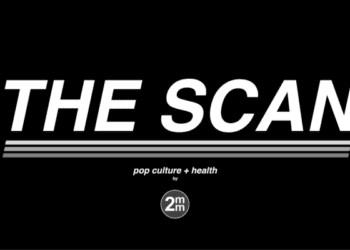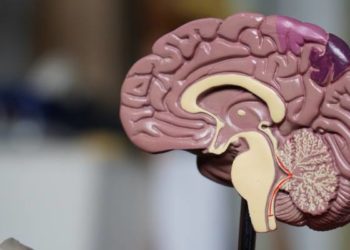Wellness Check: Mental Health
Loneliness is associated with new onset mental health problems
1. In this systematic review and meta-analysis, loneliness at baseline was associated with new onset of depression.
2. Additionally, there was a positive association between loneliness and both anxiety and self-harm.
Evidence Rating Level: 1 (Excellent)
Research suggests that those with longstanding mental health disorders are at the highest risk of loneliness. However, the association between loneliness and mental health is poorly characterized and the most recent meta-analysis on loneliness did not include a systematic literature search. As a result, the objective of the present systematic review was to determine if loneliness led to the onset of mental health problems in the general population.
Of 33,317 identified records, 32 studies from database inception to August 2021 were included in the systematic review. Of these, 7 studies were included in the main meta-analysis (8 cohorts). Studies were excluded if loneliness and mental health problems were not the primary exposures and outcomes or if they included participants with intellectual disabilities, organic mental illnesses, or children under the age of 16. Quality assessment was performed using the Mixed Methods Appraisal Tool (MMAT) as well as the Newcastle-Ottawa Scale (NOS). The systematic review was prepared using PRISMA guidelines. The primary outcome was mental health problems, including depression, anxiety, bipolar disorder, personality disorder, psychosis, etc.
Results demonstrated that the odds of developing new depression in adults more than doubled in those who are often lonely compared to those who are not/rarely lonely, even after adjustment of other factors. Furthermore, five of six studies looking at anxiety and loneliness found a positive association between the two. In a small number of studies loneliness was also associated with other common mental health problems, including suicidal ideation and self-harm. However, the study was limited by the low rates of depression in some of the included studies which means the reported effects of loneliness on depression may be underestimated. Nonetheless, these results suggest that loneliness may place individuals at risk of developing various mental health disorders.
Mental health help-seeking behaviors decreased during the COVID-19 pandemic
1. In this systematic review, there were delays and an overall decrease in help-seeking behavior for mental health problems during the COVID-19 pandemic.
2. Furthermore, the most prevalent barrier to help-seeking behavior during the COVID-19 pandemic was stigma.
Evidence Rating Level: 1 (Excellent)
Help-seeking behavior is crucial in the treatment of several mental health conditions. Unfortunately, given public health restrictions and resulting communication changes that occurred during the COVID-19 pandemic, these behaviors may have been impacted. Currently, there is a lack of evidence providing insight into barriers to help-seeking behavior. As a result, the objective of the present systematic review was to investigate the impact of help-seeking behavior on mental health in various populations during the COVID-19 pandemic.
Of 841 identified articles, 41 studies from database inception to May 2022 were included in the final analysis. Studies were included if they were conducted during the COVID-19 pandemic and addressed help-seeking behavior for mental health. The study results were divided into 9 populations, including medical professionals, local residents, hospitals, children and adolescents, online participants, pregnant women, individuals who experienced intimate partner violence (IPV), individuals with eating disorders, and others. The systematic review was prepared using PRISMA guidelines. The primary outcome was help-seeking behavior during the COVID-19 pandemic.
Results demonstrated that most studies found decreases in help-seeking behaviors during the COVID-19 pandemic. The most important barrier to help-seeking behavior was stigma, which affected ethnic minorities, youth, men, those in the military, and health professionals more than other populations. With respect to health professionals, barriers to help-seeking behavior included: heavy workload, preference for self-reliance, risk of infection, and poor mental health. However, the heterogeneity of the included studies prevented a meta-analysis, which impacted the conclusions that can be drawn from the study. Nonetheless, the present study provided a strong rationale for continuing research on the impact of the pandemic on help-seeking behavior and mental health in various populations.
Several factors impede the successful implementation of youth mental health apps
1. In this systematic review, less than half of newly developed mental health apps had been successfully implemented.
2. Furthermore, barriers such as high cost, funding restrictions, and length of research time impeded successful implementation of mental health apps.
Evidence Rating Level: 1 (Excellent)
Smartphone apps are thought to be an innovative way to address issues of accessibility and scalability in mental health interventions. However, there has not been any systematic assessment of the implementation of all evidence-based mental health apps for young people. As a result, the objective of the present systematic review was to determine the proportion of successfully implemented mental health apps, as well as the factors affecting the real-world implementation of these applications.
Of 26,311 identified records, 34 (n=29 unique apps) studies from January 2011-February 2021 were included in the final review. Studies were included if they reviewed the efficacy of native mobile apps designed to prevent or treat mental health problems or promote wellbeing in young people (age 15-25 years) and if the primary outcome was a measure of mental health. Studies were excluded if the intervention was a non-mobile app intervention, if the app was not efficacious in improving mental health, or if appropriate outcomes were not reported. Study quality was performed using the mixed methods appraisal tool. The review was conducted in accordance with the PRISMA guidelines. The primary outcome was the proportion of evidence-based mental health apps successfully implemented after development.
Results demonstrated that of 21 newly developed mental health and wellbeing apps, 9 were still available, while the remaining 12 were not, indicating a 43% implementation success rate of new apps. With respect to barriers to implementation, factors such as high cost, time, funding restraints, and long research processes were identified. Further challenges included the rapid development of technology, commercial competition, and user acquisition. However, the study was limited by the fact that the majority of participants in the included studies were older than age 20, which may limit the generalizability to adolescents. Nonetheless, these results demonstrate real-world issues that impede the successful implementation of mental health apps for youth.
ECT may be more effective than ketamine in improving depression severity
1. In this systematic review and meta-analysis, electroconvulsive therapy (ECT) resulted in fewer depression symptoms compared to ketamine.
2. However, in studies that assessed cognition/memory or serious adverse events, there were no significant differences between ECT and ketamine.
Evidence Rating Level: 1 (Excellent)
Electroconvulsive therapy (ECT) is the gold standard for treating treatment-resistant major depression (TRD). However, ECT has been underused due to various professional and patient-related barriers. As an alternative, intravenously delivered ketamine has shown promise to effectively treat TRD. Currently, no study has quantified and compared the effect size, safety, and efficacy between ECT and ketamine. As a result, the objective of the present systematic review and meta-analysis was to compare these two therapies in patients with major depressive disorder.
Of 1248 screened articles, 6 trials (n=340 patients; 162 for ECT, 178 for ketamine) from database inception to April 2022 were included. Studies were included if they evaluated the effects of ECT or ketamine on depressive symptoms in patients meeting diagnostic criteria for major depressive disorder. Studies were excluded if they used non-human participants and if they did not use standardized measures of depression. Risk of bias and study quality were evaluated using the Cochrane Collaboration Risk of Bias tool. Improvement in depressive symptoms was calculated using Hedges g standardized mean differences (SMDs) and fixed or random-effects models. The review was in accordance with PRISMA guidelines. The primary outcome was improvement of depression symptoms and severity.
Results demonstrated that ECT was superior to ketamine across various depressive symptoms measured. However, 3 studies showed that ketamine had faster antidepressant effects than ECT. Furthermore, the side effect burden differed between both treatments: ketamine had a lower risk of certain adverse events such as headache and muscle pain while ECT had lower risks of blurred vision, vertigo, diplopia, etc. However, the study was limited by the inclusion of studies with small sample sizes which may have led to them being underpowered. Nonetheless, the results of this review highlight the potential superiority of ECT to ketamine in improving depressive symptoms.
Image: PD
©2023 2 Minute Medicine, Inc. All rights reserved. No works may be reproduced without expressed written consent from 2 Minute Medicine, Inc. Inquire about licensing here. No article should be construed as medical advice and is not intended as such by the authors or by 2 Minute Medicine, Inc.







